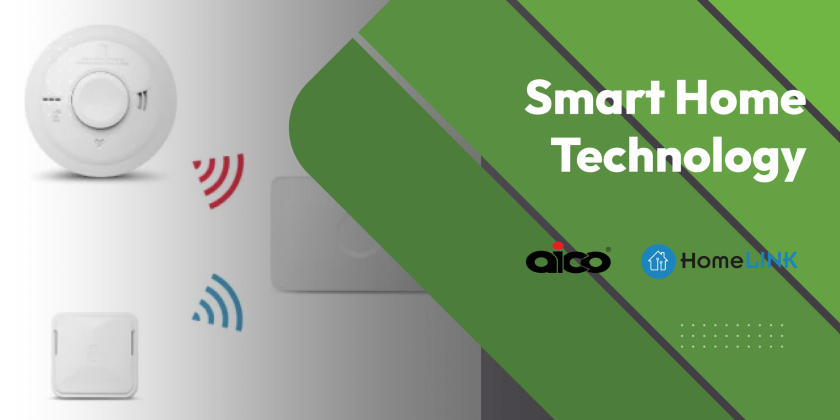Harnessing the sun’s energy is a brilliant way to produce clean electricity, and solar cells are at the heart of this innovation. These nifty devices convert sunlight directly into electricity, offering a sustainable solution to our growing energy needs. But how exactly do they manage this remarkable feat? In this straightforward guide, we’ll break down the science behind solar cells and explore how they transform the sun’s rays into usable power for homes and businesses alike. Join us as we delve into the mechanics of solar technology and uncover the practical benefits it brings to our everyday lives.
Understanding Solar Energy Basics
Solar energy is a critical piece of the renewable energy puzzle. It’s power harnessed directly from the sun, and it’s transforming how we think about electricity. To appreciate solar cells, we must first understand the fundamentals of solar energy, its history, and its growing importance today.
What is Solar Energy?
Solar energy is the energy that comes from the sun’s rays. These rays are made up of tiny packets of energy called photons. When these photons hit a solar cell, they can be converted into electricity through the photovoltaic effect.
Given that the sun is an abundant and renewable resource, solar energy presents a viable solution to reduce our reliance on fossil fuels. Notably, it is a clean energy source, meaning it does not produce harmful emissions or pollutants during electricity generation.
Solar energy can power homes, businesses, and entire communities. Its versatility is evident in various applications, from small-scale devices like calculators to large solar farms that feed electricity into the grid.
Historical Background of Solar Cells
The concept of solar cells dates back to the 19th century when physicist Edmond Becquerel discovered the photovoltaic effect. However, it wasn’t until the 1950s that the first practical solar cell was developed at Bell Labs.
Key Milestones:
-
1839: Becquerel’s discovery of the photovoltaic effect.
-
1954: Bell Labs produces the first silicon solar cell.
-
1970s: Solar technology begins to be used in outer space applications.
-
2000s: Solar power becomes more affordable and widespread.
The journey from early discovery to modern-day application shows how innovation in solar technology has steadily progressed, making it more accessible and efficient over time.
Importance of Solar Energy Today
In today’s world, solar energy is more crucial than ever. As we face the challenges of climate change and dwindling fossil fuel resources, solar power offers a sustainable alternative.
-
Environmental Impact: Solar energy reduces carbon emissions and helps combat climate change.
-
Energy Independence: Countries can decrease their reliance on imported fuels.
-
Economic Benefits: The solar industry creates jobs and stimulates economic growth.
Given these factors, solar energy is not just an option but a necessity for a sustainable future.
Components of a Solar Cell
Solar cells are composed of various components that work together to convert sunlight into electricity. Understanding these components helps demystify how solar cells function at a fundamental level.
Photovoltaic Cells Explained
Photovoltaic (PV) cells are the fundamental building blocks of solar panels. They are responsible for converting sunlight directly into electricity through the photovoltaic effect.
-
Absorption: Photons are absorbed by the PV cell, exciting electrons.
-
Separation: Excited electrons are separated by a built-in electric field.
-
Collection: Electrons are collected, generating an electric current.
PV cells are typically made from semiconductor materials, with silicon being the most common. Their efficiency in converting sunlight to electricity is crucial for the overall performance of solar panels.
Role of Silicon in Solar Cells
Silicon is the most widely used material in solar cells due to its abundant availability and favourable electronic properties. It forms the backbone of semiconductor technology used in these cells.
-
Crystalline Structure: Provides a solid framework for electron movement.
-
Semiconductor Properties: Allows control of electron flow under sunlight.
-
Versatility: Supports both monocrystalline and polycrystalline cell types.
Silicon’s role is critical in ensuring the efficiency and reliability of solar cells, making it a preferred choice for manufacturers worldwide.
Conductors and Their Function
Conductors play a pivotal role in transporting the electricity generated by solar cells. They connect individual cells within a solar panel, allowing the electric current to flow seamlessly.
-
Metal Contacts: These are placed on the top and bottom of the cells to conduct electricity.
-
Busbars and Fingers: Thin metal lines that facilitate the flow of electrons.
-
Interconnections: Wires that connect multiple cells in a series circuit.
Without conductors, the electricity produced by solar cells would not be effectively channelled for practical use, highlighting their indispensable role in solar panels.
The Science Behind Electricity Generation
To generate electricity, solar cells harness the sun’s energy through a series of scientific processes. Grasping these processes is vital to understanding how solar power works.
Photovoltaic Effect Simplified
The photovoltaic effect is the process by which solar cells generate electricity. It involves the conversion of sunlight into an electric current.
-
Photon Absorption: Photons from sunlight strike the solar cell.
-
Electron Excitation: Energy from photons excites electrons, freeing them from atoms.
-
Electric Field Effect: The cell’s built-in electric field directs these free electrons, creating an electric current.
This effect is the cornerstone of solar technology, enabling the direct conversion of solar energy into electricity.
Conversion Process of Sunlight to Electricity
Converting sunlight to electricity involves several steps within a solar panel system:
-
Collection: Solar panels collect sunlight.
-
Conversion: PV cells convert sunlight into direct current (DC) electricity.
-
Inversion: Inverters convert DC into alternating current (AC) for practical use.
-
Distribution: Electricity is distributed to power homes and businesses.
Each step is integral to ensuring the efficiency and effectiveness of solar energy systems, making solar power a practical option for electricity generation.
Electricity Flow in a Solar Panel
The flow of electricity in a solar panel follows a straightforward path. Here’s how it works:
-
Absorption: Electrons absorb photon energy.
-
Excitation: Electrons become excited and start moving.
-
Flow Direction: The built-in electric field directs the electrons towards conductors.
-
Collection: Conductors gather the electrons, creating a current.
This process ensures that the electricity generated is efficiently channelled for use, maximising the solar panel’s output.
Types of Solar Cells
Solar cells come in various types, each with its own advantages and applications. Understanding these types helps in selecting the right solar technology for specific needs.
Monocrystalline vs Polycrystalline
Monocrystalline and polycrystalline solar cells are the most common types used today.
|
Feature |
Monocrystalline |
Polycrystalline |
|---|---|---|
|
Efficiency |
Higher |
Moderate |
|
Cost |
More expensive |
Less expensive |
|
Appearance |
Uniform, dark colour |
Speckled, lighter |
|
Space Efficiency |
More efficient |
Less efficient |
Both types have their strengths, with monocrystalline offering higher efficiency and polycrystalline providing cost advantages.
Thin-Film Solar Cells
Thin-film solar cells are made by depositing one or more thin layers of photovoltaic material onto a substrate. They offer distinct benefits:
-
Flexibility: Can be applied to a variety of surfaces, including curved ones.
-
Lightweight: Easier to transport and install.
-
Cost-Effective: Generally lower production costs.
However, they typically offer lower efficiency compared to crystalline silicon cells, making them suitable for specific applications where flexibility is key.
Emerging Technologies in Solar Cells
Emerging technologies in solar cells are pushing the boundaries of efficiency and application.
-
Perovskite Cells: Promising high efficiency and low production costs.
-
Bifacial Modules: Capture sunlight on both sides, increasing output.
-
Organic Photovoltaics: Lightweight and flexible, ideal for portable applications.
These innovations are shaping the future of solar technology, making solar energy more accessible and diverse in its applications.
Benefits and Challenges
Solar energy offers numerous advantages but also faces certain challenges. Understanding these aspects is vital for assessing its role in future energy solutions.
Advantages of Solar Energy
Solar energy provides several compelling benefits:
-
Renewable Resource: Unlimited supply from the sun, reducing dependence on finite resources.
-
Environmental Benefits: No emissions, reducing carbon footprint.
-
Cost Savings: Lower electricity bills and potential for energy independence.
-
Job Creation: Growth of the solar industry creates employment opportunities.
These advantages highlight why solar energy is becoming an increasingly popular choice for both individuals and businesses.
Common Challenges in Solar Power
Despite its benefits, solar power faces several challenges:
-
Intermittency: Reliant on sunlight, affecting consistency of power supply.
-
Installation Costs: High initial costs for setup and equipment.
-
Space Requirements: Large areas needed for solar farm installations.
Addressing these challenges involves technological advancements and strategic planning to maximise solar energy’s potential.
Future Prospects for Solar Technology
The future of solar technology looks promising, with ongoing advancements and increasing adoption:
-
Technological Innovations: Continued improvements in efficiency and cost reduction.
-
Policy Support: Governments promoting renewable energy initiatives.
-
Global Adoption: Expansion of solar energy use worldwide, contributing to sustainable development.
As these trends continue, solar energy is set to play a pivotal role in the global shift towards renewable energy sources.


